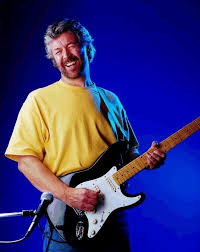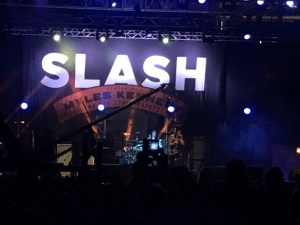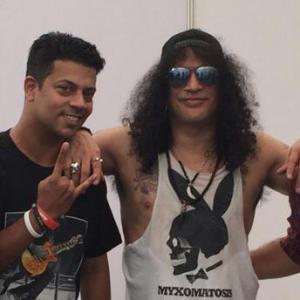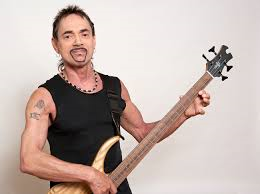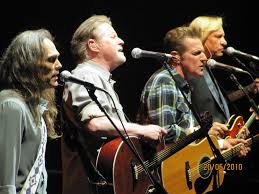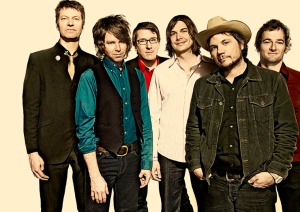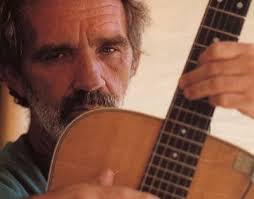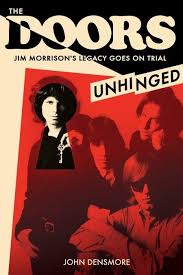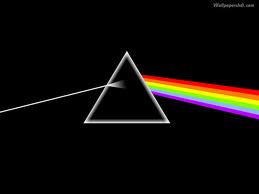
EVERY classic rock fan would have his or her own Pink Floyd story. This is mine. As the rock world celebrates the 40th anniversary of the landmark album ‘The Dark Side of the Moon’ this week, I thought I’d pen down a few memories of growing up on the band, and also mention my extremely brief encounter with its singer-bassist Roger Waters over a decade ago.
Undoubtedly, Floyd is one of my favourite acts ever, across genres. But curiously, the first time I heard the group, I hated them. I wondered how on earth they could have such a large following, when their music seemed so complex. The ringing of alarm clocks and jingling of coins weren’t my cup of music.
It must have been 1979 or 1980, and at 16 or 17, I was still to be bitten by the rock bug. Growing up in Delhi, the major source of music was radio – shows like ‘A Date With You’, ‘Forces Request’ and ‘In The Groove’. Those days, my personal taste largely revolved around ABBA, Boney M, Bee Gees, Brotherhood of Man, Donna Summer, a few evergreens, a bit of country, lots of disco. Get the hint?
I liked some of the Beatles love songs, but rock was yet to enter my life. The stations regularly played Pink Floyd’s ‘Time’ or ‘Money’, Uriah Heep’s ‘July Morning’ or Deep Purple’s ‘Smoke On The Water’, and I would lower the volume. What kind of people could possibly appreciate them?
By 1981, as I entered college, the rock phase began, first with the Doors, then with Traffic and majorly with Jethro Tull. In a year or so, I had got into Bob Dylan, Santana, the Moody Blues, Eric Clapton, Led Zeppelin and even Deep Purple, but still found Floyd and Uriah Heep too highbrow. The only Floyd song I liked was ‘Another Brick in the Wall Part 2’, though I didn’t care to listen to the rest of ‘The Wall’, which was a rage at that point. Today, ‘Another Brick In The Wall Part 2’ is probably the only Floyd song I stay away from!
I had my own personal tape recorder then, and the drawing room had a record player. I bought a few vinyls, but most of my collection was on cassette, which I used to get recorded from a place called Pyramid in Palika Bazaar. Since Tull was my favourite at that time, I had a large collection of theirs, which I kept bragging about.
My college friend Rahul Dutt wondered why I was so fond of Tull. We had a lot of common tastes in both rock and ghazals, the Indian soft music form which had become a craze, but he wouldn’t appreciate Tull. And his favourite band was Floyd, against whom I still had a bias. The only thing we argued about was ‘Tull Vs Floyd’.
When Rahul went on a holiday to Calcutta, he asked for some music. I happily gave him some Tull. He said he would take it on the condition that I would accept some Floyd tapes he would lend me. We agreed, and he gave me ‘Dark Side’ and ‘Obscured by Clouds’.
When Rahul returned, the first thing he exclaimed was: “Tull is too good. What a band. Ian Anderson is a star.” And my response was: “Pink Floyd is the ultimate. Wonder why I took so long to appreciate them.”
—
THAT was just the beginning of my Floyd era. I found their sound not only distinct, but also very deep and, of course, psychedelic. It took me to another zone, another planet, another mindspace.
The next step was to get deeper and deeper into their music. To begin with, I bought the ‘Dark Side’ LP and played it daily, at least a couple of times. Though each individual song was a masterpiece, it was one album I had to play from start to finish. I just couldn’t start with ‘Time’ or ‘Money’ and go to some other song. It had to be the complete thing. Forty-two minutes, fifty-nine seconds.
By end-1984, I moved to Jaipur to work for ‘The Times of India’. I carried my Lucky Goldstar double deck two-in-one, but didn’t have a turntable there. So I got a few cassettes of Floyd recorded.
Each C-90 cassette would have two albums. One had ‘Dark Side’ on one side and ‘Obscured by Clouds’ on the other. Another contained ‘Wish You Were Here’ and ‘Animals’. The third had ‘Atom Heart Mother’ and ‘Meddle’. And yes, there was one which had ‘The Wall’. At that time, I didn’t have the first two albums, or ‘The Final Cut’.
Coupled with a lot of Tull, the Moody Blues, Dylan and some jazz, Floyd would be a daily necessity. The ‘Wish You Were Here-Animals’ tape was played the most often, followed by the ‘Echoes’ part of ‘Meddle’. There were many favourite songs by now — ‘Mother’, ‘Dogs’, ‘Sheep’, ‘Shine On You Crazy Diamond’, ‘Echoes’, ‘Have a Cigar’, ‘If’. ‘Wish You Were Here’, ‘Goodbye Blue Sky’, ‘Comfortably Numb’, ‘Free Four’, to name some. As for ‘Dark Side’, there was no favourite song. Each one was equal.
In the absence of much reference material and also because I didn’t own the LPs, my knowledge of the band was limited to knowing the names of the musicians and the songs. Roger Waters had left the group by then, and there was talk of guitarist David Gilmour, keyboardist Richard Wright and drummer Nick Mason working on new material under the Floyd name.
But when I went to Delhi on a holiday, I met friends who possessed the LPs, and had huge discussions on Floyd. We talked of Waters’ role as a songwriter, and how the songs he wrote alone had their own stamp, compared to those written with Gilmour or with all the others. We talked of Gilmour’s guitar style, and also the influence founder-member Syd Barrett had on the band, now that I had heard the first album ‘Pipers At The Gates of Dawn’ extensively. I also learnt about saxophonist Dick Parry, singer Clare Torry and engineer Alan Parsons, who created some great music on his own too.
The Floyd phase lasted a few years. I made up for whatever I hadn’t heard — ‘A Saucerful of Secrets’, ‘More’, ‘Ummagumma’, ‘The Final Cut’ and even Barrett’s solo work released in the late 1960s. Soon, I was tripping on ‘A Momentary Lapse of Reason’, even though Waters was absent. ‘Learning To Fly’, ‘On The Turning Away’ and ‘One Slip’ became my new favourites.
Some rock concerts were available on VHS, and the Floyd favourite was ‘Live at Pompeii’. For a brief while, I got into Waters’ solo outings, like ‘The Pros and Cons of Hitch-Hiking’, ‘Amused To Death’ and ‘Radio KAOS’, though I never enjoyed them as much as Floyd.
But slowly, I moved onto various other bands and kinds of music. The frequency of listening to Floyd reduced considerably, and very often, was restricted to party sessions with friends. There was a brief ‘Division Bell’ phase, and though I liked the songs ‘Coming Back to Life’ and ‘High Hopes’ it was never among my favourite albums.
Around the late 1990s or so, the Floyd albums became available in CD form. One by one, I began picking them up, and though one always favoured the analog sound of the vinyls, the digital CDs had their own effect too. Moreover, music always seemed more personal if you had the record sleeve which you could read from.
Soon, I picked up DVDs, favourites being ‘Pulse’, ‘The Wall’ and ‘David Gilmour in Concert’. I started reading about the band — first Nicholas Schaffner’s ‘Saucerful of Secrets: The Pink Floyd Odyssey’ and many years later Mark Blake’s ‘Comfortably Numb: The Inside Story of Pink Floyd.’
Though I didn’t listen to Floyd as frequently as before, I started trying to gather as much information as I could. The Internet helped too, and one read some interesting trivia, like jazz guitarist Lee Ritenour playing an uncredited role in ‘The Wall’ album, and the child’s voice on ‘Goodbye Blue Sky’ belonging to Waters’s son Harry. And the more I read and learnt about Floyd, the more fascinated I was.
—
IN APRIL 2002, Roger Waters was scheduled to play in Bangalore. I was to cover the concert for Mid Day, and found myself in a train compartment filled with Floyd fans.
I was keen on interviewing Waters, but I was told he hated the Press. These days, he goes about giving press conferences, but during that tour, there was no question of one. And the entire media fraternity wanted a one-on-one interview.
The organisers DNA Networks ensured that they could catch him for five minutes at the airport. The exercise was mainly to ensure that the media got enough photographs. There was a barricade between the media and the Waters team, and only a few DNA staffers and sponsors could stand near Waters.
As I knew Venkat Vardhan of DNA well, he arranged for a DNA shirt of my size, so I could get close to Waters. The condition was that I wouldn’t ask any questions which would make them suspicious. I just listened for those few minutes, but I did manage to get his autograph on my rock encyclopaedia and on a cover of his album ‘In The Flesh’.
Waters was in his element when the media rattled off their questions. One journalist asked: “How contextual is your music?” Looking totally zapped, even insulted, he snapped back: “That question is totally out of context.”
“What is it like being away from David Gilmour and the others, and touring on your own?” asked another. The answer: “I wouldn’t tell you even if you were to write my authorised biography.”
“How does it feel to be on your first visit to India?” The quip: “As I don’t want to get into trouble, you can conveniently say that I am feeling thrilled.”
Somebody asked him to sign a ‘Division Bell’ CD, probably not knowing that Waters wasn’t part of that album. He just turned back, and walked towards his car. End of media session, thank you!
Waters and his troupe stayed at the Windsor Manor. The following day, some band members were giving interviews, and I got to speak to guitarist Snowy White, singer PP Arnold and Waters’ son Harry, who’s a keyboardist. I wanted to meet guitarist Andy Fairweather-Low but he was out shopping.
That evening’s concert was simply memorable. As the Sunday paper’s deadline was early, I was actually SMSing and calling my colleague Kimi Dangor in Mumbai, who compiled it to produce an excellent piece.
Nearly five years later, in February 2007, Waters played in Mumbai. The highlight of this show was that they played the entire ‘Dark Side’ album at a stretch. It was an out-of-the-world experience. After listening to the album hundreds of times, it was a completely different trip to see it live.
Undoubtedly, ‘Dark Side’ remains a milestone in the history of rock. Its 40th anniversary definitely calls for a grand celebration.
